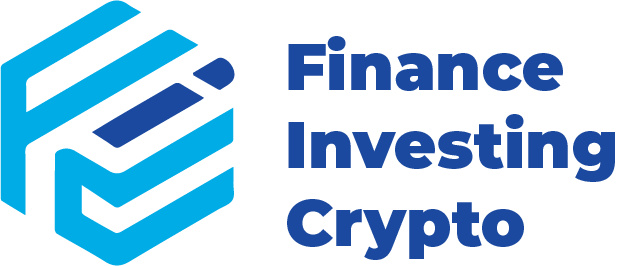Disclosure: The views and opinions expressed here belong solely to the author and do not represent the views and opinions of crypto.news’ editorial.
Right now, protocols are stuck: cycling between incentive-driven inflows and inevitable outflows of liquidity as providers chase higher and higher returns. Even with existing bridging and wrapping solutions, because of concerns around complexity and security, most retail investors are unable to or unwilling to distribute their assets effectively across protocols.
This leaves over $400 billion worth of idle assets locked across siloed chains whilst protocols across DeFi compete for limited liquidity, their demand vastly outsizing the available supply. Without a global liquidity to unlock these idle assets and enable a shared source of liquidity, DeFi will struggle to supplant traditional finance and reach global adoption.
The liquidity problem
Traditional finance thrives on deep, integrated capital markets. The centralized structure of global banks means that liquidity thresholds can be proactively regulated to maintain solvency, and the sheer number of participants in permeable global markets means that there is always capital circulating within any given system.
DeFi, by contrast, remains fragmented. A lack of compatibility between competing chains fractures the liquidity of an already small user base, whilst nontechnical participants may struggle to move their assets with the interoperability solutions that currently exist. This limits the capabilities of DeFi as a financial system; simply put, people are able to do less with their capital. This problem is captured in the one-two punch of stagnation and underutilisation.
Without access to sufficient liquidity, emerging products struggle to maintain trading volumes, lending capacity, and user activity. To attract liquidity, new projects issue native tokens and offer high APYs or governance rewards. However, whilst these strategies succeed in the short term, this capital remains trapped within individual ecosystems.
These ecosystems suffer from sharp outflows when rewards taper off or are bettered elsewhere, slowing down the growth of new and potentially innovative projects. We even see this manifest in formerly dominant protocols, with Ethereum (ETH) struggling in the last year. This has come from a cultural shift in DeFi away from promises of long-term utility and instead towards quick returns on memecoins based on Solana (SOL), drawing capital from one silo to another in the process.
Both the symptoms and causes of some of these liquidity issues are the vast amount of underutilised capital across DeFi. Unlocking this capital also provides a key solution. When we talk about $400 billion worth of idle assets in DeFi, we are talking about ‘premier’ tokens like XRP (XRP), Bitcoin (BTC), Dogecoin (DOGE); tokens with a high market cap, but a comparatively low TVL.
These tokens either lack the opportunity to be utilized effectively in staking and trading, or many of their holders lack the technical ability or interest to stake and restake for optimised yield. This represents a substantial imbalance in overall asset valuation and the associated DeFi protocol activity. If we could rectify this imbalance, there would be a flood of liquidity into the market. This would jumpstart the process of investment and innovation that DeFi needs.
Towards a global liquidity layer
If DeFi is to break free from the cycle of fragmented liquidity and short-term incentives, it must follow TradFi’s lead. Most importantly, it needs to develop a shared liquidity infrastructure to enable the frictionless flow of assets that prospective users have come to expect.
The industry is not blind to these problems, and early steps toward global liquidity are already underway. Protocols like Wormhole and LayerZero allow smart contracts to complete orders across chains. Elsewhere, intent-based protocols and advancements in zero-knowledge proofs are beginning to push the boundaries of DeFi’s UX, making capital movement as simple as in TradFi offerings.
A unified liquidity layer could create, for instance, an XRP market on Solana, a DOGE market on Avalanche (AVAX), and a Cardano (ADA) market on Base. This would enable DeFi projects to function like large-scale TradFi institutions, benefiting from deep and stable capital pools, reducing the need for constant incentive programs.
Over time, this would eliminate the short-termism of APY wars, encouraging lenders to deploy assets with greater confidence, with a unified liquidity framework mitigating exposure risks without compromising returns. Capital would be fully utilised, liquidity would flow freely to where it is needed, and DeFi’s growth would accelerate.
For retail users, this would be a breakthrough. With accessible cross-chain markets, retail investors could easily diversify their assets without having to navigate complex bridges or take unnecessary risks. Furthermore, simplified UX would lower technical barriers, making staking, lending, and trading accessible to users from day one. With reduced exposure, retail users could confidently engage in DeFi, driving adoption, introducing billions of dollars to new markets, and allowing DeFi to reach its lucrative potential.
However, if DeFi is truly serious about global liquidity, major ecosystems must move beyond isolated solutions and establish shared standards through interoperable liquidity hubs or decentralized coordination mechanisms. Founders and developers must collaborate for a healthy and prosperous ecosystem, not compete for limited resources.
The shift towards unlocking the free-flowing markets of DeFi’s future needs more than one single market-busting product. It will come from a sustained industry-wide effort: a cultural shift towards ambitious and user-friendly product offerings that take into account the needs of both the markets and the customers of the future.
Conclusion
DeFi’s liquidity problem is more than a matter of inefficiency; it points to structural, cultural, and systemic issues within the industry. Only a coordinated response will allow DeFi to reach its potential. The industry is locked in a cycle of short-term incentives, with key assets siloed and protocols competing for fragmented capital; without a structural shift toward a global liquidity layer, DeFi will struggle to scale, innovate, or offer real alternatives to TradFi.
The foundations for this shift exist; it is perhaps even underway, but a coordinated response remains missing. For those that believe in DeFi’s mission, though, a future where liquidity moves freely across chains is non-negotiable; it’s the only way forward.










